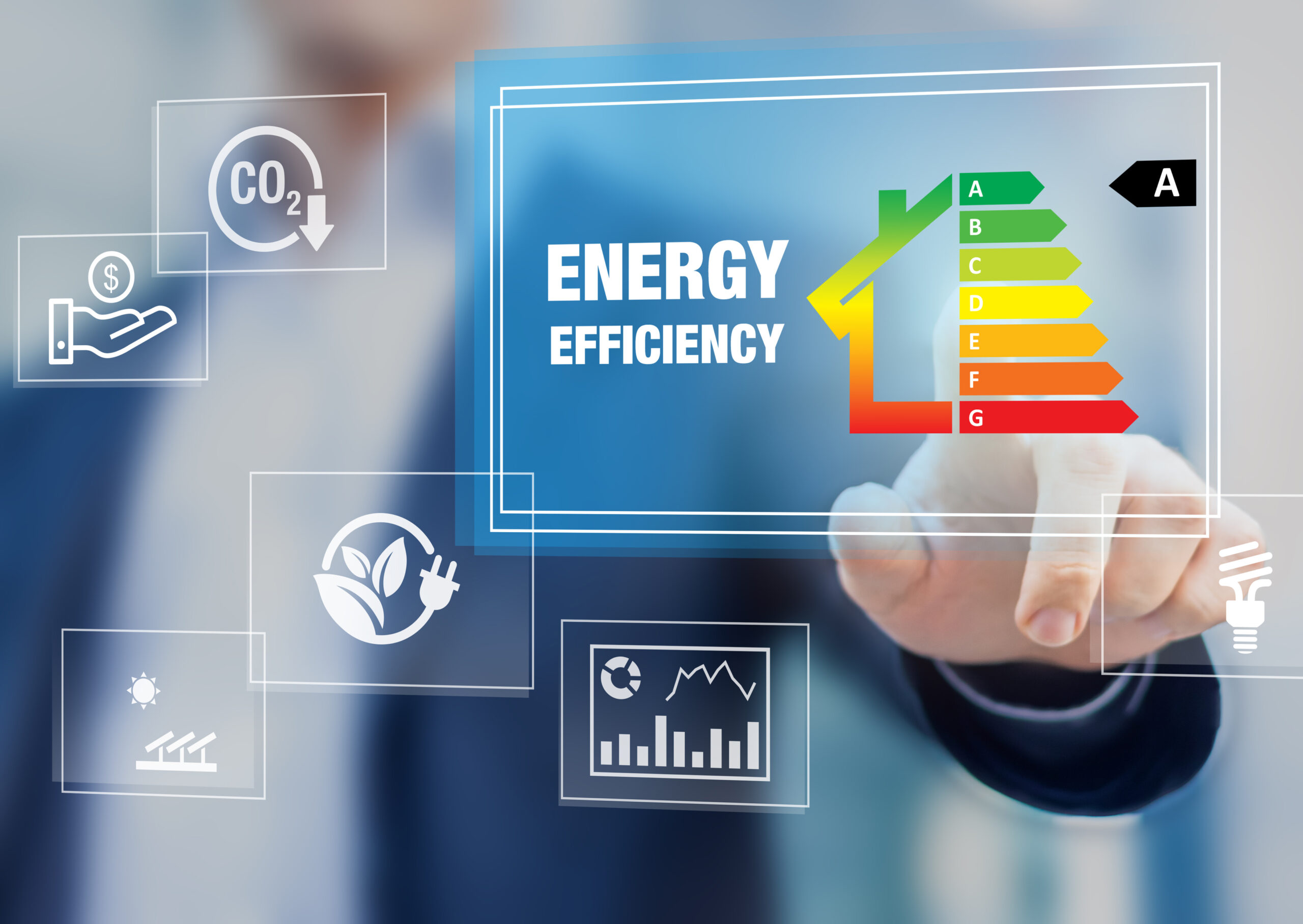
by Francisco Sayu | Aug 30, 2022 | Community, Electrification, Focus on Energy, Sustainability
Last month, I joined the Citizens Utility Board of Wisconsin in a virtual discussion about energy costs in the state. I discussed strategies to address rising energy costs during the panel, including energy efficiency and beneficial electrification. The panel focused on real-world actions residents can take to reduce their energy burden. You can watch the webinar replay by clicking on this link. Now, I want to talk about the resources we have to support individual efforts to fight soaring energy costs through energy efficiency. In particular, I want to talk about the Focus on Energy® Program. (Focus).
What do I mean by energy efficiency, and why should you care? Energy efficiency is the use of less energy to produce the same result. For example, a light-emitting diode (LED) lightbulb produces the same amount of light as an incandescent lightbulb using only 15 percent of the energy needed for the incandescent light because LED lights waste less energy in the form of heat. Energy efficiency is important because less energy saves you money on utility bills.
Most homeowners, renters, and businesses in Wisconsin can access resources – such as free Energy Saving Packs – and financial incentives to improve the energy efficiency of their homes and businesses through the Focus program. Focus is Wisconsin’s energy efficiency and renewable resource program that operates on behalf of 107 utilities. Since 2001 the program has saved Wisconsin residents over $1 billion.
Last spring, the Public Service Commission (PSC) made decisions regarding the overall policies and priorities for the next phase of the Focus program. Wisconsin law requires the PSC to review energy efficiency and renewable energy programs every four years. You can read the minutes of the PSC meeting here.
In summary, the PSC provided the following directions for the next four years (period from 2023 to 2026):
- Focus should play a more significant role in cost-effectively reducing carbon emissions. The next four years should serve as a transitional period during which the program continues emphasizing energy savings while progressing toward a transition to a greater emphasis on reducing carbon emissions.
- Focus shall not claim savings from fuel switching from unregulated fuels to electricity.
- Focus shall use the next four years as a transitional period to position the program to take on a more significant role in promoting beneficial electrification statewide.
- Focus shall develop and maintain a menu of options for voluntary utility programs to be shared with participating utilities.
- Focus shall maintain its current level of support for utility demand response programs.
- The Focus program should continue to offer income-qualified programs and coordinate with the Department of Energy weatherization program to further fill potential gaps in its low-income offerings, including community-based pilot(s) in targeted communities. The Focus Program Administrator shall convene a stakeholder group that includes community-based organizations that work with marginalized communities to address barriers to outreach and participation.
RENEW submitted comments to the PSC supporting the alignment of Focus with emissions reduction goals to lower the state’s dependence on imported fuels and support renewable energy development. You can read RENEWS’s comments on the Focus Quadrennial Planning Process here.
I will write in the future about resources to help you save money through beneficial electrification. Stay tuned!
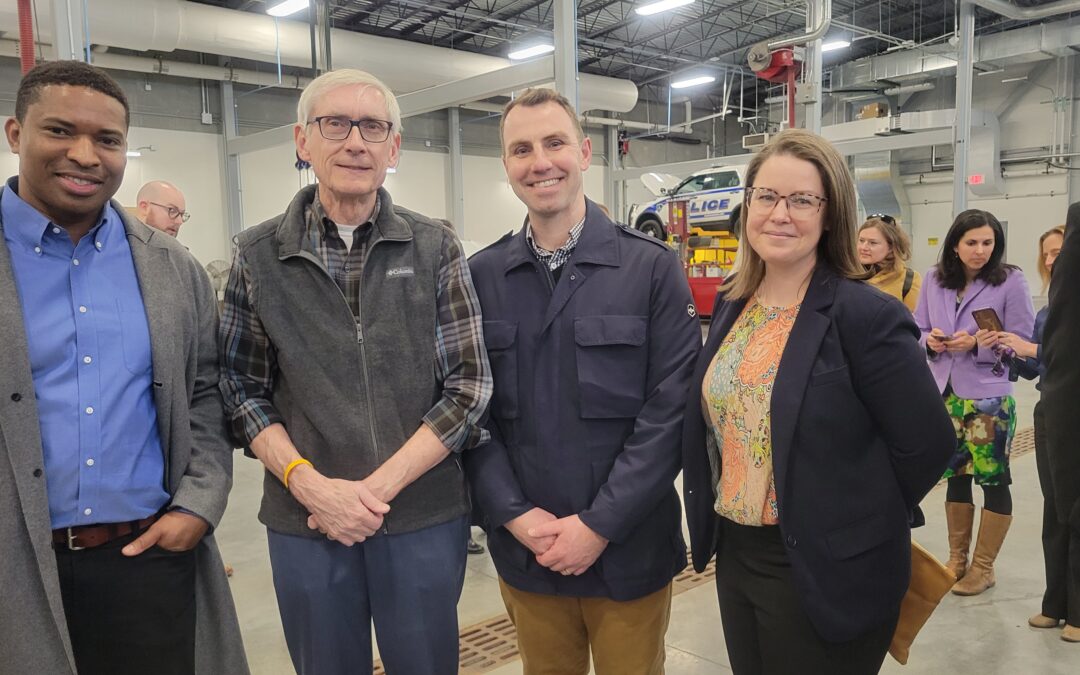
by Heather Allen | Apr 19, 2022 | Electric Vehicles, Energy Storage, Focus on Energy, Jobs, Legislative Watchlist, Local Government, Microgrids, Policy, Press Release, Renewables
Today, Governor Tony Evers introduced Wisconsin’s first-ever Clean Energy Plan. The plan was developed with input from hundreds of stakeholders and provides a pathway for Wisconsin to build a robust clean energy workforce, save billions of dollars, and become more energy independent.
Building a Clean Energy Workforce
The Clean Energy Plan developed by Governor Evers and the Office of Sustainability and Clean Energy (OSCE) identifies opportunities to grow Wisconsin’s clean energy workforce. Wisconsin’s clean energy workforce is 76,000 strong, with good-paying, resilient jobs like installing solar and electric vehicle charging stations, servicing wind turbines, manufacturing energy storage systems, and retrofitting buildings. Wisconsin can take control of its energy future and expand local job creation by investing in renewable energy.
EnTech Solutions, a division of Faith Technologies Incorporated (FTI) based in the Fox Valley, is a leader in distributed energy capabilities, eMobility charging, innovative sustainable fuel technologies, and asset management solutions for businesses looking for reliable, clean energy solutions. “EnTech Solutions is growing to satisfy the high demand for emerging technologies like microgrids, distributed energy systems, and renewable energy EV chargers,” said Tom Clark, chief experience officer with FTI. “Our clean energy workforce develops innovative solutions to solve our customers’ energy challenges.”
The Clean Energy Plan will generate 40,000 new jobs in Wisconsin by 2030, or 6,000 new jobs per year. The plan will create a Clean Energy Workforce Advisory Council and strengthen the workforce with apprenticeship tracks and reentry training for formerly incarcerated individuals. Demand for clean energy workers in Wisconsin is high and growing. State leadership will ensure Wisconsinites have access to training and jobs to help them embark on clean energy careers.
Save Wisconsinites Money
The Clean Energy Plan will accelerate renewable energy and energy efficiency solutions in commercial, residential, and multifamily new construction. Wisconsin families and businesses can save money on monthly energy bills with renewable energy investments, energy efficiency measures, and demand response technologies.
A recent study by Synapse Energy Economics Inc. found that greater investment in Focus on Energy, Wisconsin’s energy efficiency and renewable energy program, would help Wisconsin reap millions in benefits through avoided utility costs, job creation, economic investment, and reduced air emissions. Overall, the report found that if Wisconsin doubled the Focus on Energy budget, the state would receive $340 million in net benefits over one year or $3.4 billion over ten years. The expanded incentives for Focus on Energy outlined in the Clean Energy Plan would create a clean, efficient Wisconsin energy economy for everyone!
Reduce Dependence on Fuel Imports
Wisconsin can be free from the instability of oil and natural gas by investing in renewable energy and electric transportation. Wisconsin currently spends billions of dollars every year to import fossil fuels. The Clean Energy Plan will focus state investments on homegrown, renewable energy and electric vehicle infrastructure.
The Clean Energy Plan will speed the deployment of electric vehicles and charging stations around Wisconsin. The plan lays out strategies for state agencies and local governments to lead the way to build a comprehensive infrastructure for electric vehicle charging stations that will reduce the state and individual dollars spent annually on importing oil and gasoline.
We congratulate Governor Evers and all contributing stakeholders on developing this comprehensive Clean Energy Plan. RENEW is poised to help advance renewable energy, and we look forward to collaborating with state agencies and other partners to build Wisconsin’s clean energy future.
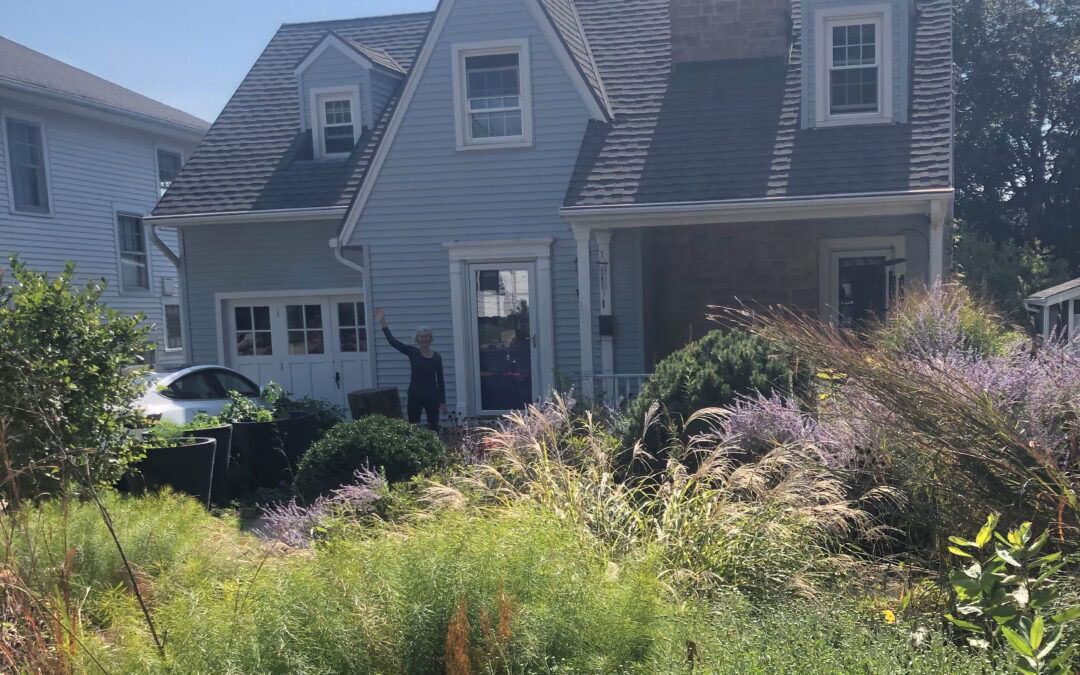
by Guest Blog | Nov 24, 2021 | Community, Focus on Energy, Home, Renewables, Solar, Sustainability
Beneficial electrification discussions often revolve around transportation electrification, specifically how electrifying vehicles can reduce emissions and offer cost savings for consumers. However, an under-discussed and equally important part of beneficial electrification is the building sector. At 24% direct emissions, the building sector comprises the largest end-use emissions in Wisconsin. Read further to learn about Susan Millar’s journey towards electrifying her home, including her installation of an air-source heat pump for greater heating and cooling energy efficiency.
The companies, technologies, and programs endorsed in this blog are not necessarily recommended or endorsed by RENEW Wisconsin. The following information and personal experience is illustrative of the process to electrify a residential property in Wisconsin.
Are you wondering how to convert an older single-family home with a forced hot-air heating system, a gas water heater, and a gas stovetop from gas and electric to electric-only? I have done that with a 90-year old house on the near west side of Madison. And because it took a fair amount of time, I am sharing the process I used. Before describing this process, I provide important context.
Context for Transitioning to All-Electric
- “Natural” gas is fossil gas. It must, and will, be phased out over time as our society gets more serious about reducing climate-warming emissions. In some municipalities, bans on gas in new construction are already in place.
- Air source heat pumps (ASHPs) are the energy-efficient electric-powered alternative to gas heating systems. ASHPs both heat and cool your house (no separate AC device needed). They have a high coefficient of performance, so while they use electricity, the amount is much less than, say, what an electric space heater or traditional AC unit uses. See, for example, this video description of ASHPs.
- Air source water heaters (also called “hybrid” water heaters) work the same way as ASHPs except they exchange air with your basement instead of the air outside. They are far more efficient than traditional electric water heaters.
- Our state’s Focus on Energy program provides rebates for air-source air and water handling systems. The installers handle this process. (I am not sure of the size of these rebates.)
- MG&E’s monthly (gas) service charge is $22. If you stop your gas service and start it again, they will bill you for monthly service charges for up to 12 months prior to the time you start again. That is, you cannot stop your gas service except for, say, the month of January without paying for up to 12 months of service.
- If you have not yet, or cannot install, solar panels on your roof, you can sign up for MGE’s shared solar program.
- If you have an EV and are willing to charge it and also run your dishwasher, etc during MG&E’s low-rate (off-peak) period (from 9 pm to 10 am on weekdays, and during weekends and holidays), you can substantially reduce your electricity bill. To do this, call MG&E and ask them to add you to their ‘Time Of Use’ program.
- Yes, you have to lay out money ahead of time to transition from gas, and I am aware that many people cannot do this. The financial payoff comes over time. For example, while paying both gas and electric service charges, and charging my EV at home, my MG&E bill this summer was between $20 -30 per month. This is largely due to having rooftop solar and Time Of Use electricity rates. While my utility bills will be higher this winter, they will be reduced by the $22 monthly gas service charge and will be substantially less than prior winters. For me, another major advantage is that I am emitting essentially no carbon dioxide to run my home and car.
Steps for Transitioning to All-Electric (used by an early adopter)
- Get an energy efficiency analysis. This is very important because if you switch from a furnace powered by an unlimited amount of gas to an ASHP, it’s important that your house holds its temperature (in winter or summer) as effectively as possible. I used a local energy efficiency consultant. He did a superb job.
- Improve your insulation. If your energy efficiency analysis indicates that your house needs insulation, then arrange to get it. I used a small local company that treated my home as if it was their own. I felt the difference immediately, even in summer.
- Replace your gas stovetop (both to get off of gas and because much new research indicates respiratory health problems are caused by gas stovetops). As I have a unit with an electric oven and gas stove, I purchased two Cuisinart’s Double Induction Cooktops (not expensive), which I placed over the gas burner area on my stove and just plugged in. (Induction stovetops work great, and are much easier to keep clean.)
- While doing steps 1 & 2, get contracts with the HVAC and plumbing company you will use. I started with the local HVAC company that I was used to. They proposed an ASHP system that would heat my house to +14F degrees and required that I retain my gas furnace for backup in the winter. As I want to eliminate the year-round monthly gas service charge, I turned them down. I tried 3 other local companies. Same response. I looked wider and found a company located near Milwaukee. In light of the energy efficiency and size of my house, they proposed to replace my gas furnace and AC units with a Mitsubishi P system that will efficiently heat my house to -14F, and then shift to an electric element (low efficiency) backup system for super cold snaps. Their price? Same as the local HVAC folks who proposed installing a +14F system with gas back-up. I accepted Midwest’s proposal. Moreover, they agreed to install my (still effective and efficient) gas and AC units in the home of a friend who has very inefficient HVAC systems – so the embedded carbon in those devices is not immediately trashed. (FYI, I informed the local HVAC companies of my decision – they lost my business to a more cutting-edge, non-local competitor.)
- Meanwhile, after checking different local plumbers, most of whom do not install hybrid water heaters, I found a small local plumbing company that proposed to install one of these at a very decent price. I happily accepted his bid.
- Both the HVAC and plumbing companies I signed with encountered installation delays because ASAP and hybrid water heater manufacturers are having sourcing issues. These problems are either due to Covid shipping issues or because the manufacturers are sending their stock to states that are ahead of us on installing these systems. Demand pushes the market.
- Both the hybrid water heater and the ASHP have easy controls and work superbly. For the mid-October to mid-November billing period, the first during which I used electricity to heat water, heat the house, and charge my EV, I used 664 kWh. My MG&E bill was $54. In round numbers, they charged me $42 for connection and distribution services, $15 for contributions to their Shared Solar, Green Power, and Low-Income Assistance programs, and $37 for electricity used at variable rates. (I have “Time of Use.” Most of my use was at the very lowest rate.) They credited me $39 for “net energy exported at variable rates” (kWhs from my solar panels), and $2 for “fuel cost.” All that suggests that I paid $-2 for electricity provided by MG&E.
- If you would like cost or contact information for the energy efficiency, insulation, HVAC, plumbing, and electrician contractors I used, just email me at sbmillar@gmail.com.
Susan Millar, September 2021

by Andrew Kell | Nov 10, 2021 | Advocacy, Community, Focus on Energy, Local Government, Policy, PSC Priorities, Public Service Commission
In 2019, Governor Evers issued Executive Order #38 to establish a goal for carbon-free electricity in Wisconsin by 2050. As the state regulator of utilities, the Public Service Commission (PSC) is tasked with regulating the number one sector source for greenhouse gas emissions in Wisconsin[1]. As a result, PSC decisions play a key role in determining whether Wisconsin will be able to achieve a zero-carbon grid by 2050.
The PSC reviews utility proposals for construction projects, rate increases, and new utility programs for their customers. However, the PSC reviews these proposals separately from one another, and historically without the integration of other utility plans, carbon reduction goals, and cross-sector emission-reduction strategies. The good news is that the PSC has begun to explore how to incorporate these factors within its decision-making processes going forward.
In keeping with a recent trend of investigating policy issues (such as Electric Vehicles and Parallel Generation), this past spring the PSC opened a docket (5-EI-158) to pursue a “Roadmap to Zero Carbon.” As described in the Notice of Investigation, the PSC intends to evaluate government and utility goals to reduce carbon emissions to zero by 2050, recommendations from recent Wisconsin reports on clean energy and climate change, and the development of partnerships to achieve carbon-free electricity by 2050.
The Zero Carbon Roadmap docket garnered much interest from active PSC intervenors (such as RENEW), with participation from environmental, health, and business advocates as well. Members of the general public also participated with input and suggestions. PSC staff issued a memo for public comment on scoping of priorities. After gathering public input, PSC staff issued a follow-up memo to the Commissioners in August that summarized stakeholder input and provided the Commissioners with options on the next steps. The Commissioners then discussed the memo and issued an order in September to take some initial actions.
In short, the PSC decided to leverage ongoing planning processes and to investigate a potentially new approach to utility ratemaking. Below is a summary of these initial steps:
- The PSC will gather more robust carbon-reduction planning information from utilities during the current biennial Strategic Energy Assessment (SEA). Utilities will soon respond to the PSC staff’s initial data request, and PSC staff will issue a draft report by next spring for public comment;
- Additionally, the PSC will seek public input on ways in which the state’s Focus on Energy program (Focus) can better incorporate beneficial electrification, programs for low-income customers, demand response, and other utility voluntary programs into its program design over the next four years. This is called the Quadrennial Planning Process, and a PSC staff recently issued a memo for comment on scope; and
- Finally, the PSC will organize a workshop on Performance-based Regulation (PBR). This workshop will gather information and perspectives on how rethinking utility goals and investment incentives can lead to a more equitable clean-energy future. The PSC will also consider customer affordability issues in relation to the transition to a zero-carbon grid.
Even with these planning processes already underway, the book is not closed on the Roadmap to Zero Carbon docket. RENEW recently reached out to Joe Fontaine, PSC Policy Advisor, to get a better sense of next steps for the investigation docket itself. Fontaine said:
“Commission staff is excited to kick off the Roadmap by addressing four of the highest priorities identified by commenters and approved by the Commission. Each of these four areas — more transparent resource planning, development of performance-based regulation concepts, and further analysis of affordability and energy efficiency issues — can help us develop a strong general foundation to address a wider range of issues related to the clean energy transition, in this investigation as well as in other Commission dockets. Future decisions in the Roadmap will be well-informed by the analysis and stakeholder input we’re receiving at each step in the investigation. Potential next steps will be determined as we make progress on these initial priorities over the next few months.”
The PSC’s Roadmap to Zero Carbon activities is running in parallel with the Office of Sustainability and Clean Energy’s (OSCE) Clean Energy Plan drafting process. Beyond the electricity sector, the Clean Energy Plan will assess, and make recommendations on, strategies cutting across all economic sectors statewide. The OSCE recently gathered public input during several public listening sessions, focusing on 1) economic and environmental justice, 2) infrastructure and industry, 3) transit and transportation, and 4) clean energy and energy efficiency. The OSCE continues to gather written comments through its website.
RENEW is also proactively partnering with Clean Wisconsin and GridLab to conduct a zero-carbon grid study for the PSC’s consideration. While the scope is still being finalized, the study will use modeling designed to answer important policy questions, such as:
- What is the right mix of renewable resources in-state and out-of-state?
- What is a good balance between utility-scale and distributed solar resources?
- How much transmission is needed in a zero-carbon future?
- What will be the health, jobs, and economic impacts as we make this clean grid transition?
Stay tuned on these zero-carbon planning activities and upcoming study developments. RENEW plans to organize presentations and panel discussions on these topics at our Renewable Energy Summit on January 27, 2022.
[1] See the Department of Natural Resources’ Wisconsin Greenhouse Gas Emissions Inventory Report of August 2020. Figure 1, on page 3, presents emissions by sector. Electricity generation is the highest emitting sector and represents 33 percent of all Wisconsin emissions.
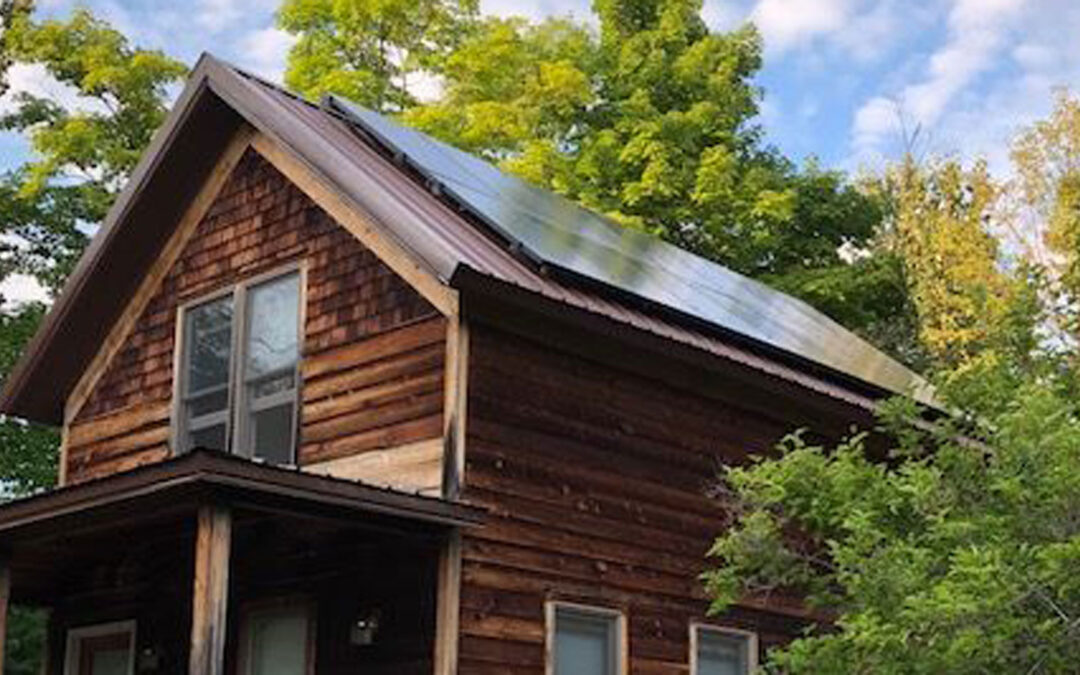
by Andrew Kell | Jul 28, 2021 | Focus on Energy, Policy, PSC Priorities, Public Service Commission
On June 29, 2021, RENEW Wisconsin hosted a webinar titled “Focus on Energy: Economic Impact in Wisconsin.” Dan York from American Council for an Energy Efficient Economy (ACEEE), Scott Blankman from Clean Wisconsin, and Maddie Wazowicz from Midwest Energy Efficiency Alliance (MEEA) provided an overview of the Focus on Energy program. In particular, Wazowicz provided pre-publication results of an upcoming Synapse Energy Economics report analyzing utility bill savings and associated efficiency of business and utility operations that would result from an increase in Focus on Energy’s annual funding.
In his introductory remarks, ACEEE’s York noted that “An analysis conducted a few years ago by the Lawrence Berkeley National Lab found that Focus on Energy was the most cost-effective program serving utility customers in the U.S.” Dan went on to say that according to ACEEE’s own state efficiency scorecard analysis, “while other states have increased their investments and associated spending for customer energy efficiency programs, such funding in Wisconsin has been largely static, locked in by the legislation that created Focus on Energy.” MEEA’s Wazowicz compared Midwestern states’ energy efficiency investments and discussed what an increase of the Focus on Energy budget could mean for Wisconsin.
To understand what additional benefits could be realized from expanding the Focus on Energy program, we can look at results from the upcoming Synapse report. The figure below uses information from a slide presented by Maddie Wazowicz at the webinar and represents pre-publication results from the Synapse study. It shows that doubling the Focus on Energy budget would translate to $20.7 million in annual utility bill savings for Wisconsin utility customers. Of that, $16.95 million in yearly utility bill savings would be realized by Wisconsin businesses if the Focus on Energy budget were doubled! This is what Wisconsin customers would save on top of savings occurring at current Focus on Energy investment levels.
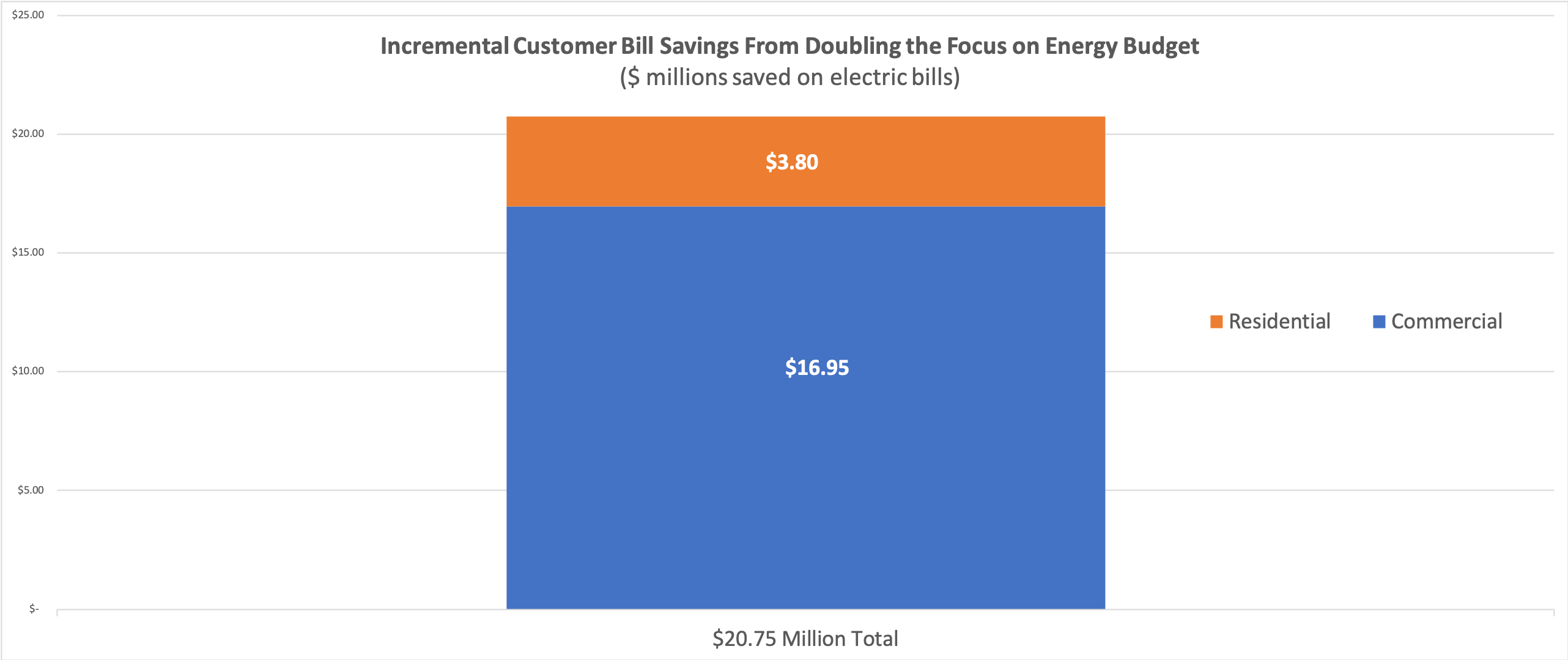
The August Synapse report details avoided utility costs, job creation, economic investment, and reduced air emissions associated with an increase in the Focus on Energy budget. Overall, the report finds that if Wisconsin doubled the Focus on Energy budget the state would receive $340 million dollars in net benefits over one year or $3.4 billion over ten years. Investing in Focus on Energy means a more clean and efficient Wisconsin economy for everyone!
The webinar then transitioned to a discussion of direct economic impacts for Wisconsin business. York moderated a panel of Wisconsin business representatives, who described their experience with the program’s energy efficiency and renewable energy incentives. The panel included Sean Hyland from American Family Insurance, Charles McGinnis from Johnson Controls, Benjamin Reynolds from Reynolds Transfer and Storage, and Tim Ulrich from Cree Lighting.
One of the hot topics of the business panel’s discussion related to data management combined with energy efficiency measures and occupancy sensors. Johnson Control’s McGinnis said that the objective of these combined technologies is to “reduce the amount of energy consumption, for the appropriate amount of occupancy, so that you can optimize the size of renewable energy application to produce green electricity.” Panelists discussed their experience with sustainability programs and performance-based metrics. In combination with his experience with the Focus on Energy program, Benjamin Reynolds described his experience with the Wisconsin Sustainable Business Council and its Green Masters Program. According to Reynolds, the Green Masters Program “is aimed at helping small-to-medium-sized businesses implement sustainability, and figure out ways to improve in energy efficiency, but also improve in waste and other performance metrics.”
Focus on Energy Impact in Wisconsin
This webinar was prompted by calls by supporters to increase funding for Focus on Energy. A RENEW blog post, penned by Michael Vickerman in October of 2020, detailed success stories and energy savings benefits realized by several Wisconsin breweries, such as Capital Brewery in Middleton, WI. That blog post referenced findings of numerous third-party evaluator annual reports on the program. These reports have found that for every dollar invested in Focus on Energy, Wisconsin receives $4 to $5 in economic and environmental benefits. That cost-to-benefit ratio represents a considerable success, as well as a huge opportunity for expansion!
The RENEW blog post also highlighted a recent review of the program by Chair Rebecca Valcq of the Public Service Commission and her request that Governor Evers propose doubling the Focus on Energy budget. Chair Valcq also recently published an op-ed in WISPOLITICS, an online journal, highlighting the economic benefits of Focus on Energy and why an increased investment is needed.
Focus on Energy is currently funded by utilities at about $95 million per year, and funding level changes can only be done through legislation. The Governor followed up on calls to increase Focus on Energy funding by doing just that with his proposed 2021-2023 budget, which RENEW highlighted in a blog post about public listening sessions earlier this year.
This past spring, legislators decided to omit all Governor Evers’ clean energy provisions from its own proposed budget, which unfortunately meant leaving an important economic growth opportunity on the cutting room floor after Governor Evers signed the state budget earlier this July.
Since its inception in 1999, Focus on Energy has fueled a more energy-efficient economy in Wisconsin. The program was created with bipartisan support and can help grow the economy once again with increased funding. Since doubling the Focus on Energy funding was not part of the state budget this year, legislators on both sides of the aisle can prioritize supporting a stand-alone piece of legislation. A clean, growing economy should be something we can all get behind!
For more information, contact Andrew Kell, RENEW Wisconsin’s Policy Analyst, andrew@renewwisconsin.org.
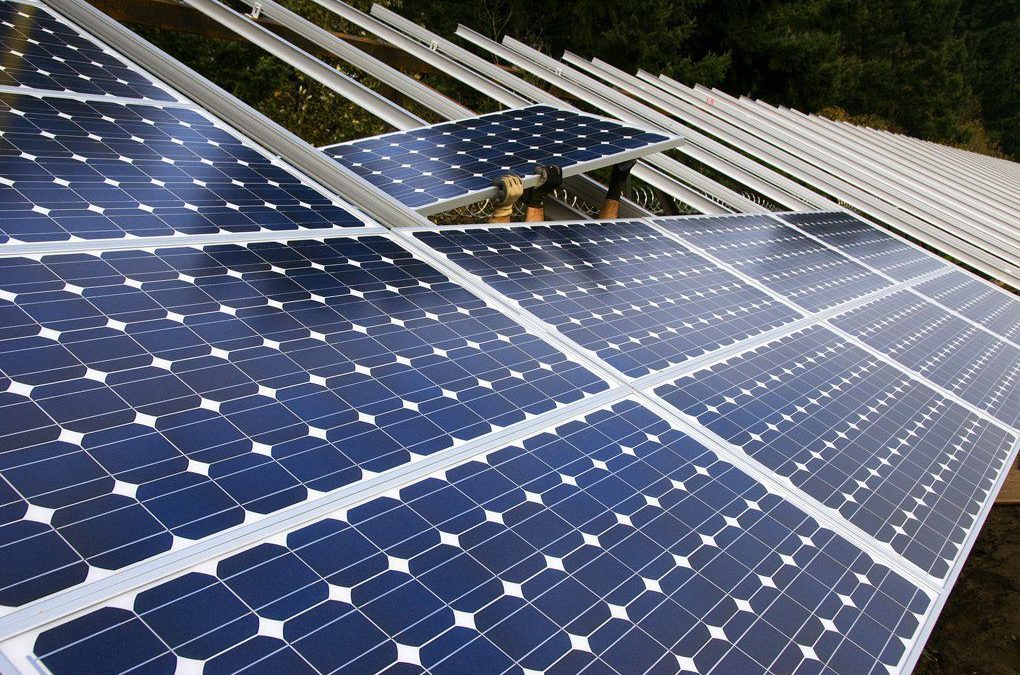
by Michael Vickerman | Oct 7, 2020 | Focus on Energy, PSC Priorities, Public Service Commission
Now entering its 20th year of operation, Wisconsin’s Focus on Energy program is widely recognized as a model public benefits program delivering energy savings to utility customers. This statewide program, funded entirely through utility bills, provides incentives and other services to help households, businesses, and nonprofits invest in energy efficiency measures and supply themselves with clean energy.
Take Capital Brewery as an example. With financial support from Focus on Energy, the Middleton brewery and beer garden installed in 2014 a high efficiency heat recovery system with controls and a 13 kilowatt (kW) solar electric system on its roof. Thanks to these investments, Capital Brewery saves more than $4,500 each year on its heating and electricity bills.
Capital Brewing’s Wisconsin peers are also capturing the energy value of sunshine. Breweries such as Central Waters, Ale Asylum, New Glarus, Bare Bones, and Lakefront have parlayed incentives from Focus on Energy into investments in onsite solar power. In so doing, they demonstrate that incorporating sustainability and carbon reduction into their operations is good business and can often be a competitive advantage.
According to its web site, Focus on Energy has enabled millions of ratepayers to save $730 million in avoided energy costs since the program’s inception. Moreover, it has been a consistently powerful economic engine for the state of Wisconsin, yielding between $4 and $5 in economic and avoided pollution benefits for every $1 spent by the program.
But to fully appreciate Focus on Energy’s reach and impact, it’s worth reading through the dozens of energy efficiency and clean energy success stories made possible by program incentives. As these testimonials and case studies make clear, Focus offerings have something of value for every electric customer in Wisconsin, no matter how large or small they may be.
On the renewable energy side, virtually every solar photovoltaic (PV) system powering Wisconsin residences and small businesses today received a rebate from this unique, ratepayer-funded program. Nowadays, with solar installation prices down to about a quarter of where they were 10 years ago, Focus on Energy can award rebates to many more customers than in the past. Notwithstanding the ongoing pandemic, 2020 is shaping up to be a record-breaking year in the residential solar market, fueled by $2.3 million in incentives from Focus on Energy.
The popularity of its solar incentives is putting a strain on Focus on Energy’s budget going into 2021. Under its current four-year plan, the program reserves $5.5 million each year for all qualifying renewable energy investments, out of an annual budget overall of about $95 million. Increasing its overall budget would require approval from state legislators. Absent such action, Focus on Energy has little choice but to pare residential rebate levels down to $500 per installation going forward.
Electric providers throughout Wisconsin contribute 1.2% of their gross revenues into Focus on Energy. Though they are not required to participate, all of the municipal utilities and nearly half of the electric cooperatives in Wisconsin also fund the program, to the tune of $8 a year per meter.
As the overseer of Focus on Energy, the Public Service Commission (PSC) is very mindful of the demands placed on the program, and its crucial contribution to reducing fossil energy consumption and greenhouse gas emissions. To that end, PSC Chair Rebecca Valcq is asking Governor Evers to put an additional $100 million into the program, starting in July 2021. According to the PSC, the increase would cost residential households less than a $1/month.
“These programs reduce emissions,” Valcq said. “They reduce the need to go out and look at building generation and transmission projects. These programs create jobs.”
Signed into law by Governor Tommy Thompson back in 1999, Focus on Energy has enjoyed strong bipartisan support throughout its history. Considering how broadly its benefits have been spread throughout the state, increasing the program’s budget should be something both Republicans and Democrats can agree on.
Michael Vickerman is policy director of RENEW Wisconsin







